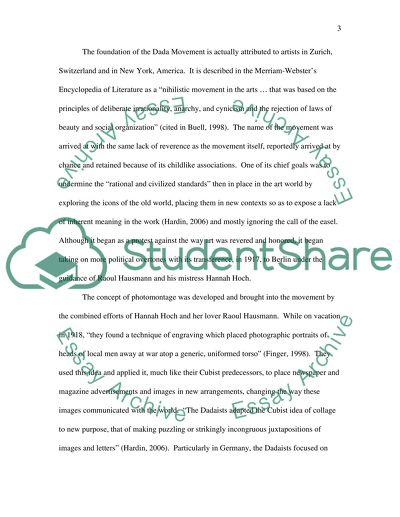Cite this document
(“Hannah Hoch and the Dada Art Movement Essay Example | Topics and Well Written Essays - 1250 words”, n.d.)
Hannah Hoch and the Dada Art Movement Essay Example | Topics and Well Written Essays - 1250 words. Retrieved from https://studentshare.org/visual-arts-film-studies/1543935-modernist-art
Hannah Hoch and the Dada Art Movement Essay Example | Topics and Well Written Essays - 1250 words. Retrieved from https://studentshare.org/visual-arts-film-studies/1543935-modernist-art
(Hannah Hoch and the Dada Art Movement Essay Example | Topics and Well Written Essays - 1250 Words)
Hannah Hoch and the Dada Art Movement Essay Example | Topics and Well Written Essays - 1250 Words. https://studentshare.org/visual-arts-film-studies/1543935-modernist-art.
Hannah Hoch and the Dada Art Movement Essay Example | Topics and Well Written Essays - 1250 Words. https://studentshare.org/visual-arts-film-studies/1543935-modernist-art.
“Hannah Hoch and the Dada Art Movement Essay Example | Topics and Well Written Essays - 1250 Words”, n.d. https://studentshare.org/visual-arts-film-studies/1543935-modernist-art.


